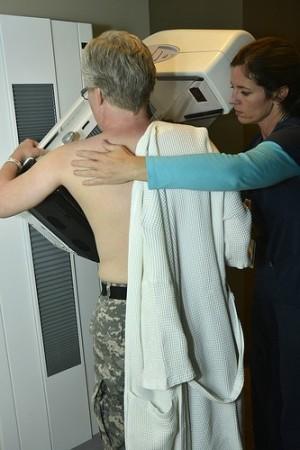
Scientists have identified another gene that increases risk of breast cancer in women.
Women, who possessed the PALB2 gene mutations, were found at 35 percent increased risk of being diagnosed with breast cancer by age 70. BRCA1 or BRCA2 are the other two genes linked to breast cancer.
PALB2, also called partner and localizer of BRCA2, is the gene that is responsible for creating a protein called partner and localizer of BRCA2, according to the Genetics Home Reference. This protein along with the BRCA2 protein helps repair DNA and protects cells against genetic damage, thus are known as tumour suppressors.
For the study, researchers looked at 362 women with PALB2 gene mutation. The participants belonged to 154 families without BRCA1 or BRCA2 mutations. Though the study could find a direct link between PALB2 mutation and the deadly disease, the risk entirely depended up on family history and prevalence of breast cancer in the family. However, researchers said that the mutations occur very rarely.
It was in 2007, that the role of PALB2 mutations in breast cancer came to light. Research showed that time of birth determined risk of breast cancer in these women - women who were born earlier have relatively lower risk of developing breast cancer than recently born women. Delayed motherhood may be one of the factors that lead to this occurrence, according to the study background.
"Since the BRCA1 and BRCA2 mutations were discovered in the mid-90s, no other genes of similar importance have been found and the consensus in the scientific community if more exist we would have found them by now," Dr Marc Tischkowitz, from the University of Cambridge, who led the study, said in a news release. "PALB2 is a potential candidate to be 'BRCA3'. As mutations in this gene are uncommon, obtaining accurate risk figures is only possible through large international collaborations like this."
Detecting the PALB2 mutation and treating it is not difficult as researchers have already developed a clinical test for early diagnosis and have found drugs belonging to the class PARP inhibitors highly promising.
"Knowing the key genes that significantly increase cancer risk and having precise cancer risk estimates ultimately could help assess the breast cancer risk for each woman and allow better targeting or surveillance," Dr Antonis Antoniou from the Centre for Cancer Genetic Epidemiology at the University of Cambridge, said.
Findings of the study have been reported in the New England Journal of Medicine.
Apart from breast cancer, mutation in PALB2 is also responsible for fanconi anemia type N (FA-N), a rare blood disorder that causes bone marrow failure.

















